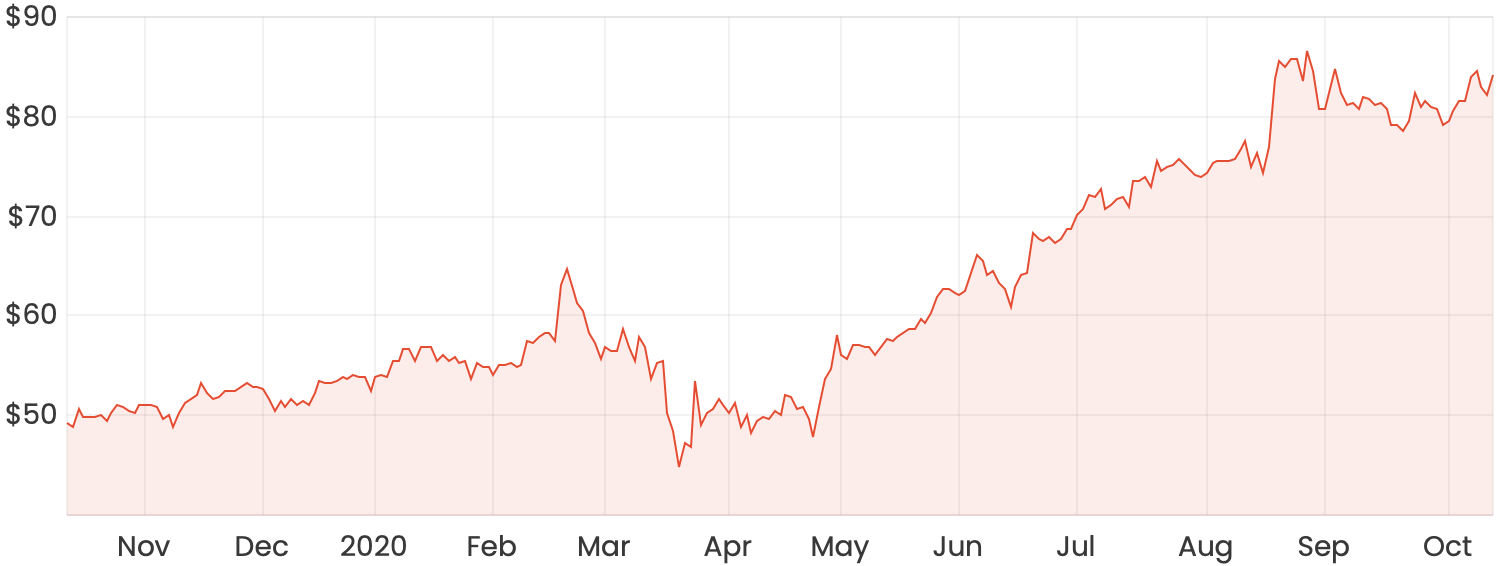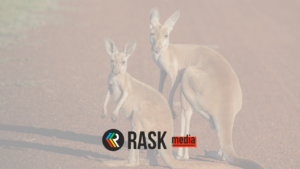The Domino’s Pizza Enterprises Limited (ASX: DMP) share price is up 70% in the last 12 months. Trading on a price/earnings (P/E) multiple of 51x, is it still a buy?
DMP share price

Domino’s Pizza Enterprises is the largest pizza chain in Australia, and the largest franchisee of the Domino’s brand from US-listed Domino’s Pizza Inc. (NYSE: DPZ).
Domino’s Pizza Enterprises has exclusive master franchise rights for the Domino’s brand in Australia, New Zealand, Belgium, France, The Netherlands, Japan, Germany, Denmark and Luxembourg.
Growth on all cylinders
CEO and managing director Don Meij said the theme of the Domino’s FY20 report was “Our pizza brings people closer”. This appears to be the case as network sales were up 12.8% to $3,267.9 million and revenue rose 33.8% to $1,920.4 million.
Net profit after tax (NPAT) and earnings per share (EPS) were up 3.3% and 2.7%, respectively, to $145.8 million and 169.4 cents per share. NPAT and EPS were impacted by higher depreciation, which the group noted was “primarily due to operating a proportionally higher number of Corporate stores in ANZ and Japan”.
Domino’s grew its network of stores by 163 to 2,668. Online sales were $2,357 million, representing 72% of all sales!
Perhaps most pleasingly, same-store sales were up in all regions – 2.8% in Europe, up 5.1% in ANZ and up 18.4% in Japan.
High-quality business
One metric that can highlight a high-quality business is return on equity (ROE).
ROE is a measure of profitability, calculated by dividing net profit after tax by shareholders equity (total assets – total liabilities).
In the Domino’s FY20 report, Chairman Jack Cowin remarked: “A prudent approach to growth and investment has delivered an underlying return on equity of 40.8%, with a three-year average return on equity of 41%”.
Essentially, Domino’s generated an extremely healthy return of about $0.40 for every $1.00 of shareholders equity.
As an interesting side-note, Jack Cowin is the founder and largest shareholder of Hungry Jack’s in Australia. So he certainly knows what he’s talking about.
Return on equity should be looked at in conjunction with other ratios such as return on investment (ROI) and return on capital (ROC).
Room to sell more pizza
Domino’s has set clear targets for growth, which will be fuelled by store openings.
The group has outlined a target to operate a network of 5,550 stores between 2025 and 2033. This represents just over a doubling in its current store count.
The majority of store openings will be in Europe and Japan, with planned total stores as follows:
- Europe – 2,850 stores, 2.5x current count.
- ANZ – 1,200 stores, 1.4x current count.
- Japan – 1,500 stores, 2.2x current count.
Valuation: Are Domino’s shares a buy?
To get an idea of what Domino’s shares could be worth in the future, we can look at historical performance and targets set by management.
10 years ago as at FY10, Domino’s operated 823 stores and achieved EPS of 26.2 cents. EPS per store therefore was 26.2/823 = $0.03.
Fast forward to FY20 and the group has 2,668 stores and posted EPS of 169.4 cents. EPS per store is now 169.4/2,668 = $0.06. Therefore, the 10-year compound annual growth rate (CAGR) in EPS per store is about 7%.
Domino’s plans to grow the store network to 5,550 stores by about 2030. I will assume EPS per store will grow at 5% each year, thereby reaching $0.10 in 2030.
Multiplying this by a network of 5,550 stores gives EPS of $5.55 in around 10 years’ time.
In FY2030, I believe Domino’s Pizza will continue to be a high-quality company with scope for future growth. Therefore, I will assign a P/E multiple of 20x. Rearranging the P/E formula gives us a price target of $111 in FY30.
This represents around 35% upside from the current Domino’s share price, so I think most of the future growth is baked in. With that said, to quote the great Warren Buffet, “Beware of geeks bearing formulas”.




